We still have to wait nearly two months to finalize offseason movement for the 2020-21 men's college basketball season, but at least we now have a date: Aug. 3. The NCAA announced earlier this month that its deadline for players to withdraw from the NBA draft and maintain college eligibility will be either Aug. 3 or 10 days after the NBA draft combine, whichever comes first. Given that it's highly unlikely that the combine comes before August, let's assume the deadline will be Aug. 3.
That gives us about a month and a half before we'll know what the college basketball landscape will look like for the upcoming season, though players will announce their draft decisions before then, too. There are also non-draft decisions that will impact the rankings between now and then, with several noteworthy transfers still on the board -- led by Andrew Nembhard -- and waiver decisions to be made on recent transfers -- with Olivier Sarr and Mac McClung atop that list.
Gonzaga stays at No. 1 after leapfrogging Villanova last month, but there are tweaks throughout the rest of the rankings.
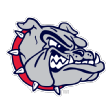
1. Gonzaga Bulldogs
Previous: 1
Mark Few still has a long way to go before the early-entry trio of Joel Ayayi, Corey Kispert and Filip Petrusev have to decide whether to withdraw from the NBA draft, but my expectation is that all three return to Spokane, mostly because they currently aren't considered first-round picks, and the Zags will be the favorites to win the national championship if all three return. According to ESPN's NBA draft rankings, Kispert is No. 43, Petrusev is No. 70, and Ayayi is unranked. At the very least, Petrusev and Ayayi could greatly improve their stock with another year in college. If any of them leave, it could open more opportunities for rising sophomore Anton Watson, who showed flashes early last season when he started the first four games and hit double figures in scoring twice. He missed the second half of the season because of a shoulder injury, but his size and versatility were an asset when he was healthy.
Projected starting lineup:
Jalen Suggs (No. 5 in ESPN 100)
Joel Ayayi (10.6 PPG, 6.3 RPG)
Corey Kispert (13.9 PPG)
Drew Timme (9.8 PPG, 5.4 RPG)
Filip Petrusev (17.5 PPG, 7.9 RPG)
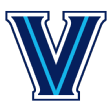
2. Villanova Wildcats
Previous: 2
We had already factored in Saddiq Bey keeping his name in the NBA draft when we updated the rankings a month ago, but now it's official. What will coach Jay Wright do to replace Bey in the lineup? Bey was one of the biggest breakout stars in the country last season, becoming Villanova's best player and one of the best players in the Big East. The Wildcats don't have a singular player who will be able to replicate Bey's skill set, given that he could score around the basket but also shot 45.1% from 3 and was highly efficient. Wright could go small with Tulane transfer Caleb Daniels, who averaged 16.9 points for the Green Wave two seasons ago, he could go big with Dhamir Cosby-Roundtree lining up next to Jeremiah Robinson-Earl down low, or he could go with something in between, with Cole Swider, a 6-foot-9 shooter who started 15 games last season.
Projected starting lineup:
Collin Gillespie (15.1 PPG, 4.5 APG)
Justin Moore (11.3 PPG)
Caleb Daniels (16.9 PPG at Tulane)
Jermaine Samuels (10.7 PPG, 5.5 RPG)
Jeremiah Robinson-Earl (10.5 PPG, 9.4 RPG)
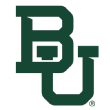
3. Baylor Bears
Previous: 3
Tristan Clark will be one of the bigger keys to the 2020-21 national championship race, as a return to form for the Baylor big man would give the Bears a huge lift in the frontcourt. When he suffered a season-ending injury in January 2019, he was Baylor's second-leading scorer and leading the nation in field goal percentage at 73.7%. Clark returned last season but wasn't anywhere close to his pre-injury self. He started six of the first eight games of the campaign, then saw an inconsistent role for the rest of the season, scoring in double figures once and shooting less than 50% from the field. Scott Drew's team is once again going to be carried by its elite perimeter group (assuming Jared Butler and MaCio Teague) return, but the Bears will need some interior balance and a replacement for Freddie Gillespie. If it isn't Clark, other options include freshman Dain Dainja, UNLV transfer Jonathan Tchamwa Tchatchoua and returnee Flo Thamba.
Projected starting lineup:
Jared Butler (16.0 PPG, 3.1 APG)
Davion Mitchell (9.9 PPG, 3.8 APG)
MaCio Teague (13.9 PPG, 4.6 RPG)
Mark Vital (6.1 PPG, 6.3 RPG)
Tristan Clark (4.0 PPG, 2.4 RPG)
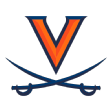
4. Virginia Cavaliers
Previous: 4
How good will Sam Hauser be next season? There's a strong case to be made that he should be preseason first-team All-ACC and in the conversation for preseason ACC Player of the Year. Looking at last season's All-ACC teams, the entire first team is gone, and the only returnee from the second team is Garrison Brooks, who now has two five-star freshmen pushing for minutes on the interior. In terms of freshmen, North Carolina's Caleb Love and Duke's Jalen Johnson should make the biggest impact, but preseason POY seems lofty for both. Louisville rising sophomore David Johnson is a sneaky pick. But back to Hauser. The 6-foot-8 Wisconsin native has had a year to acclimate to the Virginia program, and he's coming off two straight seasons in which he averaged at least 14 points per game and shot better than 40% from 3. Virginia's offense is not as wide-open as Marquette's, but Hauser's ability to stretch the floor and Virginia's status as ACC favorite make him a legitimate candidate.
Projected starting lineup:
Kihei Clark (10.8 PPG, 5.9 APG)
Casey Morsell (4.0 PPG)
Tomas Woldetensae (6.6 PPG)
Sam Hauser (14.9 PPG, 7.2 RPG at Marquette)
Jay Huff (8.5 PPG, 6.2 RPG)

5. Iowa Hawkeyes
Previous: 5
This projection is still under the assumption that Luka Garza returns to the Hawkeyes, and though he recently told ESPN's Myron Medcalf that he wasn't leaning in either direction, his quotes make it seem like he needs to be certain about his NBA opportunities to stay in the draft. With Garza ranked No. 80 in ESPN's NBA draft rankings, that doesn't seem like a guarantee. Therefore, we're expecting Garza to return, and that leaves Iowa as the Big Ten favorite in my eyes. Wisconsin was better last season and brings nearly everyone back, Michigan State is Michigan State, Ohio State, Rutgers and Indiana will all be factors, and Illinois could be a top-four team if Ayo Dosunmu and Kofi Cockburn withdraw from the draft. But Iowa was an elite offensive team last season and will get Jordan Bohannon back after he played just 10 games last season. He brings shooting, playmaking and yet another offensive weapon for Fran McCaffery.
Projected starting lineup:
Jordan Bohannon (8.8 PPG, 3.3 APG)
CJ Fredrick (10.2 PPG)
Connor McCaffery (6.2 PPG, 4.0 APG)
Joe Wieskamp (14.0 PPG, 6.1 RPG)
Luka Garza (23.9 PPG, 9.8 RPG)

6. Wisconsin Badgers
Previous: 7
After starting the offseason ranked No. 15, the Badgers continue to rise in the rankings and are inching closer to the top five. Unlike with pretty much every other team in the country, nothing has changed, personnel-wise, for Greg Gard's team. There have been no surprising departures and no transfer additions -- just continuity from a team that finished the season as hot as any other team in the country. During the final month of the season, Wisconsin was 8-0 and had the No. 3 adjusted efficiency ranking, according to BartTorvik.com. Will that carry over to next season? To live up to this ranking, it will have to, but the facts that all five starters from the stretch run are back and all five are seniors should certainly help. The Badgers were far more dangerous from the perimeter late in the season, shooting 41% from 3 in the final eight games. Gard will once again trot out five players capable of making 3s, which will pose problems for opposing defenses.
Projected starting lineup:
D'Mitrik Trice (9.8 PPG, 4.2 APG)
Brad Davison (9.9 PPG, 4.3 RPG)
Aleem Ford (8.6 PPG, 4.4 RPG)
Nate Reuvers (13.1 PPG, 4.5 RPG)
Micah Potter (10.1 PPG, 6.2 RPG)

7. Kansas Jayhawks
Previous: 6
Bill Self will have to rely heavily on newcomers for scoring pop next season. Last season's top two scorers, Devon Dotson and Udoka Azubuike, are both gone, and those two made things a lot easier on the complementary pieces, with their ability to attract the defense's attention. Marcus Garrett is expected to take over the primary playmaking role, and though he's a capable distributor, he isn't as dangerous off the bounce as Dotson. Ochai Agbaji and Christian Braun can make open shots. David McCormack is a big body down low, but he isn't Azubuike. That brings us to Bryce Thompson, a five-star freshman, and Tyon Grant-Foster, one of the top junior college transfers in the country. Thompson is a big-time scorer with the ability to make shots from the perimeter and get to the rim off the bounce, and Grant-Foster has size, has length and can shoot it. Those two will be counted on early to provide points.
Projected starting lineup:
Marcus Garrett (9.2 PPG, 4.6 APG)
Bryce Thompson (No. 26 in ESPN 100)
Ochai Agbaji (10.0 PPG)
Tyon Grant-Foster (juco transfer)
David McCormack (6.9 PPG, 4.1 RPG)

8. Michigan State Spartans
Previous: 10
The ultimate X factor in college basketball next season is going to be Joshua Langford, who missed the past season and a half because of a left foot injury. Langford has a year of eligibility left, though, and Tom Izzo told reporters in May that "if he's healthy, his hope is to play." Of course, we haven't seen Langford play since December 2018, but if he is anything close to his pre-injury self, Izzo will have one of the best wings in the country at his disposal. He was averaging 15 points prior to his injury and hit double figures in every game as a junior. Fortunately for Izzo, he doesn't need to count on Langford being a star again. Gabe Brown and Aaron Henry should both be back on the wings, and Marquette transfer Joey Hauser will bring perimeter shooting and scoring punch after sitting out last season. But a healthy Langford would be a great luxury to have.
Projected starting lineup:
Rocket Watts (9.0 PPG)
Gabe Brown (6.8 PPG, 3.6 RPG)
Aaron Henry (10.0 PPG, 4.6 RPG)
Joey Hauser (9.7 PPG, 5.3 RPG at Marquette)
Xavier Tillman (13.7 PPG, 10.3 RPG

9. Duke Blue Devils
Previous: 8
It seems like Mark Williams is being overshadowed a bit when it comes to impact freshmen around the country, given his 7-foot size, high-level defensive ability and the fact that he could start right away next season in Durham. Mike Krzyzewski doesn't have too many true big men on next season's roster, with Williams and Columbia graduate transfer Patrick Tape likely to battle for the starting center spot. Duke has plenty of scorers in Jalen Johnson, Matthew Hurt, Wendell Moore Jr. and D.J. Steward, and Jeremy Roach brings toughness and playmaking to the point guard position. The Blue Devils won't need Williams to be a go-to option on the offensive end, even though he has been efficient around the rim in the past. If he makes the defensive impact next season that we're expecting, it wouldn't be a shock to see him be a sneaky one-and-done prospect.
Projected starting lineup:
Jeremy Roach (No. 18 in ESPN 100)
Wendell Moore Jr. (7.4 PPG)
Jalen Johnson (No. 12 in ESPN 100)
Matthew Hurt (9.7 PPG)
Mark Williams (No. 29 in ESPN 100)

10. Tennessee Volunteers
Previous: 11
Rick Barnes is going to be spoiled for choice next season. The Volunteers return four starters and add one of the nation's top recruiting classes, a group that features two five-star prospects in Jaden Springer and Keon Johnson. There's also Sacred Heart graduate transfer E.J. Anosike, who averaged nearly 16 points and 12 rebounds last season. But there's one player being lost in the shuffle a bit, and that's Oregon transfer Victor Bailey Jr. Bailey has great athleticism and shot nearly 40% from 3 as a sophomore as he played 37 games for a Sweet 16 team. Santiago Vescovi was thrust into the starting point guard role last season once Lamonte Turner got hurt, but he struggled with turnovers; if those struggles continue, Barnes could move Springer or Josiah-Jordan James to a playmaking role and get Bailey into the lineup. The preseason battles for starting spots will be awfully interesting in Knoxville.
Projected starting lineup:
Santiago Vescovi (10.7 PPG, 3.7 APG)
Jaden Springer (No. 16 in ESPN 100)
Josiah-Jordan James (7.4 PPG, 5.5 RPG)
Yves Pons (10.8 PPG, 5.4 RPG)
John Fulkerson (13.7 PPG, 5.9 RPG)
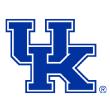
11. Kentucky Wildcats
Previous: 13
There's no word yet on Olivier Sarr's availability for next season, which leaves a lot of questions for Kentucky's frontcourt. The perimeter is going to be absolutely loaded, with three five-star prospects combining with Creighton graduate transfer Davion Mintz and a couple of former ESPN 100 prospects. But the frontcourt is incomplete at best. Keion Brooks will be counted on for a breakout season after playing maybe his best game of the season in the finale against Florida. But as the only returnee on the roster, he will also need to provide leadership. Besides Brooks, John Calipari has top-50 freshmen Lance Ware and Isaiah Jackson up front. It's hard to say that either player is ready to start immediately down low, but Jackson is an elite defensive player, and Ware brings toughness. A smaller lineup with Clarke or Boston in a small-ball 4 role seems unlikely. The Wildcats need Sarr.
Projected starting lineup:
Devin Askew (No. 24 in ESPN 100)
B.J. Boston (No. 6 in ESPN 100)
Terrence Clarke (No. 9 in ESPN 100)
Keion Brooks (4.5 PPG, 3.2 RPG)
Isaiah Jackson (No. 31 in ESPN 100)

12. Creighton Bluejays
Previous: 12
Ty-Shon Alexander established himself as one of the best two-way players in college basketball last season, especially in the latter half of the season, when Creighton emerged as a bona fide Big East title contender and Final Four threat. Despite his departure, the Bluejays are well-stocked on the perimeter. Sixth man extraordinaire Denzel Mahoney should slot into the starting lineup and at least replace some of Alexander's offense, and Georgia native Rati Andronikashvili is considered one of the better European prospects coming to college. Coach Greg McDermott should also have expanded options down low, which was a weakness last season. Christian Bishop is back as an undersized 5-man, but now McDermott can turn to two legitimate centers if he needs to, with Jacob Epperson and Ryan Kalkbrenner. Given that the Bluejays were one of the worst rebounding and shot-blocking teams in the Big East last season, that's a useful alternative.
Projected starting lineup:
Marcus Zegarowski (16.1 PPG, 5.0 APG)
Denzel Mahoney (12.0 PPG)
Mitch Ballock (11.9 PPG, 5.3 RPG)
Damien Jefferson (9.4 PPG, 5.5 RPG)
Christian Bishop (8.6 PPG, 5.3 RPG)
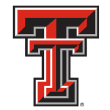
13. Texas Tech Red Raiders
Previous: 9
Chris Beard's team changed as much as any team in the country in the last month, with two key personnel moves impacting the Red Raiders' outlook for next season. First, Davide Moretti signed with an agent to pursue a professional move overseas. It was something that had been rumored for several weeks, but Moretti would have been the team's top returning scorer. Beard bounced back by landing Georgetown transfer Mac McClung, although he would need a waiver to compete immediately next season. It's also an interesting fit, as McClung will have to adapt quickly on the defensive end -- but also provides Tech with a wing player who can get his own shot. It's going to be a busy summer in Lubbock; Beard will be working on a waiver for McClung, while VCU transfer Marcus Santos-Silva has classes to finish in order to graduate and play right away next season.
Projected starting lineup:
Nimari Burnett (No. 21 in ESPN 100)
Kyler Edwards (11.4 PPG, 3.1 APG)
Terrence Shannon Jr. (9.8 PPG, 4.1 RPG)
Joel Ntambwe (11.5 PPG, 5.5 RPG at UNLV)
Marcus Santos-Silva (12.8 PPG, 8.9 RPG at VCU)
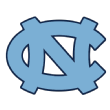
14. North Carolina Tar Heels
Previous: 14
One of the things I keep coming back to when thinking about the 2020-21 college basketball season is North Carolina and how Roy Williams will handle his post rotation. The Tar Heels might have the deepest and most talented frontcourt group in the country, and even though Williams likes to play two big men at the same time, it is going to be a challenge to get everyone minutes. Garrison Brooks and Armando Bacot return after starting last season. Brooks will be in contention for preseason ACC Player of the Year, and former five-star recruit Bacot had 11 double-doubles as a freshman in Chapel Hill. Then there's incoming freshmen Day'Ron Sharpe and Walker Kessler, both of whom were top-15 recruits in the 2020 class. Sharpe is a dominant rebounder, and Kessler has a better offensive game. The four-man rotation could look a bit like it did in 2017, when Luke Maye and Tony Bradley played about one-third of the minutes in bench roles behind Isaiah Hicks and Kennedy Meeks.
Projected starting lineup:
Caleb Love (No. 17 in ESPN 100)
Anthony Harris (6.8 PPG)
Leaky Black (6.5 PPG, 5.0 RPG)
Armando Bacot (9.6 PPG, 8.3 RPG)
Garrison Brooks (16.8 PPG, 8.5 RPG)
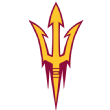
15. Arizona State Sun Devils
Previous: 15
Bobby Hurley will potentially have one of the most explosive perimeter groups in the country next season, with the backcourt of first-team All-Pac-12 selection Remy Martin, Pac-12 Sixth Man of the Year Alonzo Verge Jr. and five-star scorer Josh Christopher forming an elite offensive trio. Martin has to withdraw his name from the NBA draft before that dream can come to fruition, but either way, Hurley's biggest task next season will come in the frontcourt. Romello White decided to graduate and transfer for his final season, despite starting all but five games during his Arizona State career. As a result, Hurley needs to find reinforcements in the paint. He could go with a smaller lineup that features starting forward Kimani Lawrence and top-50 recruit Marcus Bagley, or he could try to rely on versatile forward Taeshon Cherry or big man Jalen Graham. Too bad trades aren't a thing in college basketball because Arizona State and North Carolina would seem to fit perfectly.
Projected starting lineup:
Remy Martin (19.1 PPG, 4.1 APG)
Alonzo Verge Jr. (14.6 PPG)
Josh Christopher (No. 10 in ESPN 100)
Kimani Lawrence (4.9 PPG, 2.6 RPG)
Jalen Graham (3.2 PPG, 2.8 RPG)

16. Oregon Ducks
Previous: 16
How will coach Dana Altman replace All-American point guard Payton Pritchard, who is moving on after four stellar seasons in Eugene? There are a few options. Will Richardson often took the reins of the offense when Pritchard was on the bench, and he's a crafty lefty who consistently found creases in the defense to make plays. The Ducks also added ESPN 100 point guard Jalen Terry and UNLV transfer Amauri Hardy. Hardy, like Richardson, is more of a scorer than a distributor, but he averaged more than three assists per game in each of his past two seasons. Terry is the most pure point guard of the group, and though he's small, he's extremely quick. He'll be able to push the pace or get into the lane and find teammates. My best guess is that Hardy will get the point guard spot early, with Richardson and Chris Duarte shouldering most of the perimeter scoring load.
Projected starting lineup:
Amauri Hardy (14.5 PPG, 3.3 APG at UNLV)
Will Richardson (11.0 PPG, 3.7 RPG)
Chris Duarte (12.9 PPG, 5.6 RPG)
Eugene Omoruyi (13.8 PPG, 7.2 RPG at Rutgers)
N'Faly Dante (5.8 PPG, 2.8 RPG)

17. West Virginia Mountaineers
Previous: 17
Offense, particularly half-court offense, has been an Achilles' heel for West Virginia the past couple of seasons, and that was especially obvious during the Mountaineers' six-losses-in-seven-games stretch in February. I think there are two reasons that this could be less of an issue for Bob Huggins' team next season. One, Miles McBride could move into the starting lineup with Jermaine Haley graduating. McBride was a huge spark offensively for West Virginia during the middle part of the season and finished the season with three straight double-figure-scoring games. Two, Jalen Bridges will be available after redshirting last season. A former ESPN 100 prospect, Bridges has good size and versatility and brings shooting prowess to the wing. Given that the Mountaineers were a woeful 3-point-shooting team the previous season, Bridges should help.
Projected starting lineup:
Jordan McCabe (3.1 PPG)
Emmitt Matthews (6.3 PPG)
Miles McBride (9.5 PPG)
Oscar Tshiebwe (11.2 PPG, 9.3 RPG)
Derek Culver (10.4 PPG, 8.6 RPG)

18. Texas Longhorns
Previous: 20
How Shaka Smart figures out his lineup and rotation next season will be fascinating to watch. If he goes by who started the most games, it would be Matt Coleman III, Courtney Ramey and Andrew Jones in the backcourt, with Jase Febres as a wing shooter and Jericho Sims down low. But when Texas went on its winning streak toward the end of the season, it was Kai Jones and Royce Hamm Jr. starting together down low. Gerald Liddell started 10 games before suffering an injury, and Kamaka Hepa started 10 games in the second half of the season. After playing 27 minutes the first 24 games of the season, Brock Cunningham saw a huge role late in the season. Former top-40 recruit Will Baker also played sparingly as a freshman. Oh, and the Longhorns are bringing in top-10 prospect and likely one-and-done forward Greg Brown. Very few teams can say that all 13 guys on their roster have proven that they deserve minutes; Texas is one of them.
Projected starting lineup:
Matt Coleman III (12.7 PPG, 3.4 APG)
Courtney Ramey (10.9 PPG)
Andrew Jones (11.5 PPG)
Greg Brown (No. 8 in ESPN 100)
Jericho Sims (9.7 PPG, 8.2 RPG)

19. Stanford Cardinal
Previous: 18
We're still waiting on a decision from Tyrell Terry, and his decision will determine whether Stanford is a preseason top-20 team and legitimate Pac-12 title contender or a team fighting for a top-four finish in the league. If Terry departs, coach Jerod Haase will likely need Daejon Davis to run the point full-time, and for an offense that had its bouts of inconsistency during Pac-12 play, that isn't an ideal situation. Terry can get his own shot, make 3s at a high rate and create for others. Having continuity with Terry will also help early on, when Stanford heads to the Maui Invitational, with a field that has several solid teams but no clear-cut favorite. It's a chance for the Cardinal (or Texas or Indiana or Alabama or North Carolina) to make a November statement. That's unlikely without Terry. He's currently ranked just inside the top 50 of ESPN's NBA draft rankings.
Projected starting lineup:
Tyrell Terry (14.6 PPG, 3.2 APG)
Daejon Davis (8.8 PPG, 3.7 RPG)
Ziaire Williams (No. 7 in ESPN 100)
Spencer Jones (8.8 PPG, 3.2 RPG)
Oscar da Silva (15.7 PPG, 6.4 RPG)
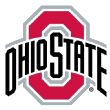
20. Ohio State Buckeyes
Previous: 22
E.J. Liddell could be the biggest key for Ohio State next season, given the various personnel losses and departures this offseason for the Buckeyes. C.J. Walker is back at the point guard spot, and Duane Washington Jr. brings shooting to the wing. Harvard graduate transfer Seth Towns and California transfer Justice Sueing are both proven scorers, and Kyle Young brings energy and rebounding down low. But it's Liddell who could be the X factor. Of the three ESPN 100 prospects who signed with Ohio State in the 2019 class, only Liddell remains after D.J. Carton and Alonzo Gaffney both left. Liddell is a powerful forward who creates matchup problems with his strength and ability to score in a variety of ways inside the arc. Liddell showed flashes down the stretch when he had an expanded role, going for 17 points and 11 rebounds against Illinois and following that with 12 points and four boards at Michigan State.
Projected starting lineup:
C.J. Walker (8.7 PPG, 3.5 APG)
Duane Washington Jr. (11.5 PPG)
Seth Towns (16.0 PPG, 6.7 RPG at Harvard)
E.J. Liddell (6.7 PPG, 3.8 RPG)
Kyle Young (7.5 PPG, 5.8 RPG)
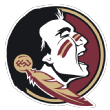
21. Florida State Seminoles
Previous: 24
I'm most intrigued to see how coach Leonard Hamilton uses Scottie Barnes next season. Barnes is a super-versatile forward who is capable of guarding multiple positions, initiating offense in the half court, pushing the ball up the floor and finding teammates for baskets. He played alongside Cade Cunningham at Montverde Academy in Montverde, Florida, so he didn't have to play point-forward all that much, but it wouldn't be a surprise to see him used in that role in Tallahassee. M.J. Walker has always been more of a scorer, and Sardaar Calhoun is a 6-foot-6 wing. There's a case to be made that there isn't a pure point guard on the Seminoles' roster, which leads us back to Barnes being the primary ball handler in Florida State's offense. He isn't much of a shooter, so having the ball in his hands in a creative capacity makes a lot of sense -- and it might be the only option for Hamilton next season.
Projected starting lineup:
M.J. Walker (10.5 PPG)
Sardaar Calhoun (juco transfer)
Scottie Barnes (No. 4 in ESPN 100)
RaiQuan Gray (6.0 PPG, 3.8 RPG)
Malik Osborne (6.0 PPG, 4.9 RPG)

22. Rutgers Scarlet Knights
Previous: 25
It will be interesting to see what tweaks coach Steve Pikiell has in store next season to get Rutgers to be more consistently efficient on the offensive end. Even though the Scarlet Knights are bringing in Cliff Omoruyi, the program's highest-ranked recruit since 2008, it's unlikely that he will start immediately alongside returning big man Myles Johnson. Rutgers had success last season playing with four guys who can make shots around Johnson in the middle. Jacob Young, Caleb McConnell and Paul Mulcahy are all candidates to start next season with Akwasi Yeboah gone. Young would bring the most scoring punch, but he also could be best used as a spark off the bench. The Scarlet Knights ranked 10th in the Big Ten in offensive efficiency during conference play and scored fewer than one point per possession in five of their final 10 games. Assuming their stellar defense (top-10 nationally) carries over to next season, a more consistent offense could help Rutgers take the next step and lock up an NCAA tournament bid a little earlier.
Projected starting lineup:
Geo Baker (10.9 PPG, 3.5 APG)
Jacob Young (8.5 PPG)
Montez Mathis (7.4 PPG, 3.5 RPG)
Ron Harper Jr. (12.1 PPG, 5.8 RPG)
Myles Johnson (7.8 PPG, 7.9 RPG)
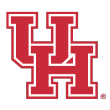
23. Houston Cougars
Previous: 19
The Cougars saw a big drop in the most recent rankings after Nate Hinton announced that he was keeping his name in the NBA draft. But coach Kelvin Sampson has plenty of perimeter firepower to replace Hinton in the lineup, with Caleb Mills (13.2 PPG) and DeJon Jarreau (9.0 PPG) primarily coming off the bench for the second half of last season, ESPN 100 guard Tramon Mark entering the program and Idaho transfer Cameron Tyson (13.5 PPG) ready after sitting out last season. But Fabian White Jr.'s season-ending injury could end up hurting Houston even more than Hinton's decision. Sampson doesn't have a ready-made replacement on the interior, as both Justin Gorham and Brison Gresham saw inconsistent roles last season. That explained the Cougars' interest in Delaware graduate transfer Justyn Mutts, who is an excellent rebounder and could have started right away, but he committed to Virginia Tech on Monday.
Projected starting lineup:
DeJon Jarreau (9.0 PPG, 3.7 APG)
Marcus Sasser (8.1 PPG)
Quentin Grimes (12.1 PPG)
Caleb Mills (13.2 PPG)
Brison Gresham (2.9 PPG, 3.5 RPG)
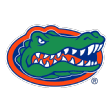
24. Florida Gators
Previous: 21
One of the biggest questions entering the offseason for Florida was how coach Mike White was going to handle the point guard situation. Andrew Nembhard started every game the past two seasons, but former McDonald's All-American Tre Mann was looking for a bigger role, Louisiana Tech transfer Tyree Appleby (17.2 PPG, 5.6 APG) was entering the fold, and returnee Ques Glover gave a spark when he was in the game last season. Nembhard made life a little easier for White when he decided to enter his name in the transfer portal and go elsewhere next season. Mann and Appleby will likely battle for the starting job, and both players will be tasked with one thing: playing faster. The Gators want to speed things up, closer to how they played in White's first couple of seasons in Gainesville. At Louisiana Tech, White's teams ranked in the top 50 nationally in adjusted tempo in each of his final three seasons and in the top 120 nationally his first two seasons at Florida. The past two seasons? No. 344 and No. 326.
Projected starting lineup:
Tyree Appleby (17.2 PPG, 5.6 APG at Louisiana Tech)
Noah Locke (10.6 PPG)
Scottie Lewis (8.5 PPG, 3.6 RPG)
Keyontae Johnson (14.0 PPG, 7.1 RPG)
Omar Payne (3.8 PPG, 3.6 RPG)

25. Arkansas Razorbacks
Previous: Next in line
The final spot in this month's rankings comes down to Arkansas and Indiana, and Justin Smith's decision to transfer from the Hoosiers to the Razorbacks settles the debate. Although Smith's departure from Indiana could make it easier for IU coach Archie Miller to slot five-star freshman Khristian Lander into the starting lineup, someone needs to replace Smith's production up front. Could that player be Race Thompson? As for Arkansas, Smith fills a need in the frontcourt. Eric Musselman's team is loaded on the perimeter, with options across the board, but it lacked depth and high-major experience up front. Smith solves that, and it wouldn't be a surprise to see him slot into the starting lineup right away. The Razorbacks will be able to go at least nine or 10 deep if they want, though Musselman has generally preferred shorter rotations.
Projected starting lineup:
Jalen Tate (13.9 PPG at Northern Kentucky)
Isaiah Joe (16.9 PPG)
Vance Jackson (11.1 PPG, 5.3 RPG at New Mexico)
Justin Smith (10.4 PPG, 5.2 RPG at Indiana)
Connor Vanover (7.5 PPG, 3.0 RPG at California)
Next in line:
Indiana Hoosiers (previous: 23)
UCLA Bruins (previous: next in line)
Richmond Spiders (previous: next in line)
Louisville Cardinals (previous: next in line)
Michigan Wolverines (previous: next in line)
Dropped out:
N/A
